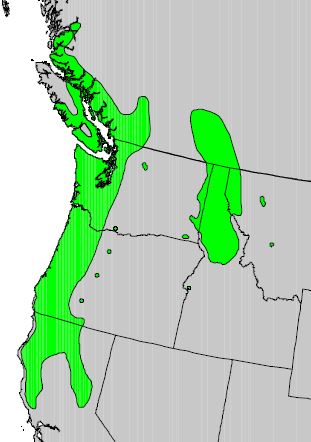Taxonomy: Kingdom - Plantae (plants). Subkingdom - Tracheobionta (vascular plants). Superdivision - Spermatophyta (seed plants). Division - Magnoliophyta (flowering plants). Class - Magnoliopsida (dicotyledons). Subclass - Rosidae. Order - Rhamnales. Family - Rhamnaceae (buckthorn). Genus - Frangula Mill. Species - Frangula purshiana (DC.) J.G. Cooper
Ecology: Cascara generally grows on lower mountain slopes. It may also inhabit moist canyons on the east slope of the Cascades. In Oregon, cascara is generally a moist-site indicator. Cascara is very tolerant of shade. Being shade tolerant, it is often found in the understory of second-growth forests. Therefore, its primary role seems to be that of a long-lived invader species.
In the WFDP: Cascara is very rare in the WFDP, with only one stem above 1cm at DBH that is tagged.



